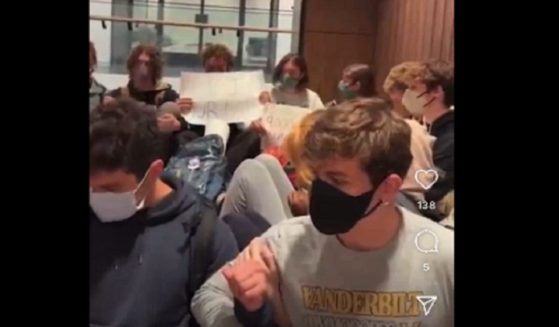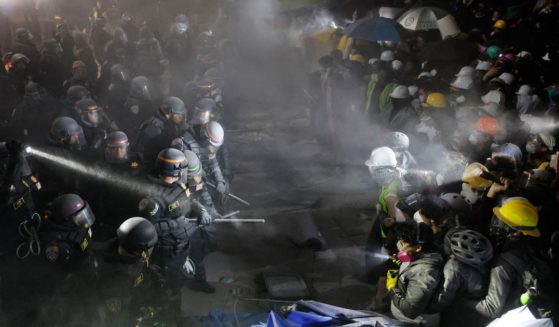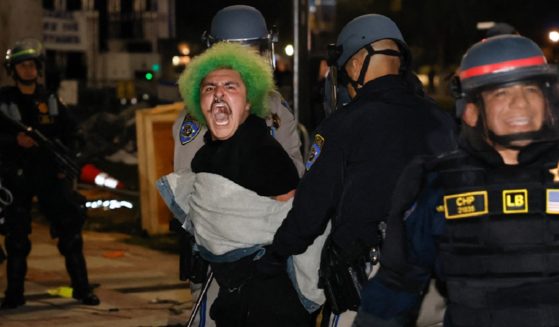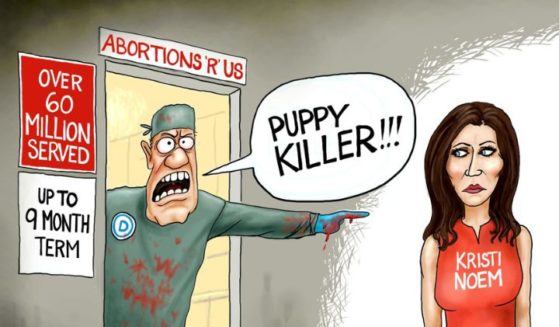If Gun Murders Are 'Epidemic,' Why Does NYT Call 10,000 Late-Term Abortions 'Exceedingly Rare'?
When is something “exceedingly rare?”
When is something an “epidemic?”
It seems the answer lies in how it fits your narrative, at least when it comes to The New York Times.
Take late-term abortions. In an article about how Senate Majority Leader Mitch McConnell is “looking to energize social conservatives,” Sheryl Gay Stolberg pinned the “exceedingly rare” tag on two bills involving late-term abortions.
”Both bills put a spotlight on late-term abortions, which are exceedingly rare — the Centers for Disease Control and Prevention said last year that abortions after 20 weeks accounted for 1.2 percent of abortions in 2016, the latest period studied,” Stolberg wrote in the Monday article.
As Ramesh Ponnuru pointed out at National Review, however, this number wasn’t as insignificant as Stolberg wants you to think it is.
“She cites a CDC estimate that abortion after 20 weeks accounted for 1.2 percent of abortions in 2016. There were 874,100 abortions in the U.S. that year; 1.2 percent would be 10,489,” Ponnuru wrote.
“For comparison, the number of gun homicides in the U.S. that year was estimated to be about 11,000. Perhaps the Times should start calling them ‘exceedingly rare’ too?”
Funny he should mention that.
Two days after the San Bernardino mass shooting in 2015, The Times’ editorial board was pretty clear regarding how it felt about the number of gun deaths in America, declaring the time had come to “End the Gun Epidemic in America.”
The article was hyper-specific, too, in that the board felt a particular danger was posed by those evil “assault weapons,” an ill-defined category of rifles that look really minatory and hold a special appeal to mass shooters not because they’re particularly efficient at murder but because they get media coverage like this.
“It is a moral outrage and a national disgrace that civilians can legally purchase weapons designed specifically to kill people with brutal speed and efficiency,” the board wrote.
“These are weapons of war, barely modified and deliberately marketed as tools of macho vigilantism and even insurrection. America’s elected leaders offer prayers for gun victims and then, callously and without fear of consequence, reject the most basic restrictions on weapons of mass killing, as they did on Thursday. They distract us with arguments about the word terrorism. Let’s be clear: These spree killings are all, in their own ways, acts of terrorism.”
In 2017, the year with the highest number of mass shooting deaths on record, 224 people were killed. In 2016, the year after San Bernardino, 374 people were murdered by rifles, certainly not all of them from those “weapons of mass killings” that are “deliberately marketed as tools of macho vigilantism and even insurrection.”
(Oh, by the way, the 2015 worldwide death toll for terrorism — the actual root cause of the San Bernardino shooting, no matter how much The Times wants to believe it was just a word to “distract” from guns — was 29,424. Not an epidemic, guys.)
According to The Times, late-term abortions are “exceedingly rare,” so no need to ban them. The number of deaths by rifle is exponentially lower, so the deaths caused by a subset of those rifles is an “epidemic.”
The article by Stolberg, by the way, isn’t an opinion piece, although it’s awfully difficult to tell nowadays in either The Times or its Acela-linked cousin, The Washington Post.
For example, she stated that by putting the bills on the floor, “Mr. McConnell hopes to energize the social conservatives who helped elect Mr. Trump and whose enthusiasm will be needed to help Republicans hold on to the Senate this year, while forcing vulnerable Democrats to take uncomfortable votes on bills that frame abortion as infanticide. The rhetoric around the measures is hot; Mr. Trump, for instance, has pointed to one of the bills to falsely assert that Democrats favor ‘executing babies AFTER birth.’”
Senate Democrats just voted against legislation to prevent the killing of newborn infant children. The Democrat position on abortion is now so extreme that they don’t mind executing babies AFTER birth….
— Donald J. Trump (@realDonaldTrump) February 26, 2019
The reference here, of course, is to Virginia Democratic Gov. Ralph Northam’s infamous statement about how, in certain situations, “The infant would be delivered. The infant would be kept comfortable. The infant would be resuscitated if that’s what the mother and the family desired.”
Sure, this may have been hyperbole. It’s better than saying over 10,000 late-term abortions is “exceedingly rare” in the same paper that declared gun violence an “epidemic.” It’s one or the other.
Stolberg also wrote “the bills carry names that abortion rights advocates regard as inflammatory and misleading.”
The names are pretty clear: the “Pain-Capable Unborn Child Protection Act,” a bill to ban abortion after 20 weeks, and the “Born-Alive Survivors Protection Act,” which requires doctors to provide aid to children born alive after an abortion.
In the first case, the “inflammatory and misleading” part involves whether or not children can feel pain after 20 weeks in the womb, with both sides citing their own scientific evidence. Limited shrift is given to McConnell’s statement that only seven nations allow the practice after 20 weeks, which means this would bring us in line with the rest of the world.
In terms of the “Born-Alive Survivors Protection Act,” Stolberg wrote that viable children born alive after an abortion are, again, “exceedingly rare.” Whether it’s a matter of discretion or simply a lack of data (I suspect the latter), she declines to give numbers here.
But note the language in all circumstances.
The abortion industry is scarcely challenged in Stolberg’s piece. Guns are looked at under a blistering microscope.
Yet, if you want to look at gun murders and late-term abortions, the numbers are very similar. If you want to look at so-called “assault weapons” and late-term abortions, they aren’t even close.
One is an “epidemic.” The other, “exceedingly rare.” You don’t even need to ask why.
Truth and Accuracy
We are committed to truth and accuracy in all of our journalism. Read our editorial standards.












